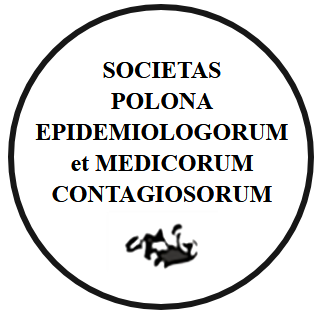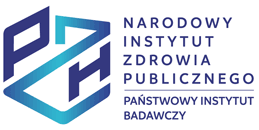INTRODUCTION. In children, SARS-CoV-2 infection may manifest with symptoms of fever, cough, muscle pain, diarrhea or waste smell and taste. However, in most cases it is mild or asymptomatic. Determination of the level of anti-SARS-CoV-2 IgG antibodies in children enables to assess retrospectively the incidence of the SARS-CoV-2 infection among children.
AIM OF THE STUDY. The aim of the research was to analyze the results of anti-SARS-CoV-2 antibodies in the IgG class contained in children hospitalized in north-eastern Poland in 2021.
MATERIAL AND METHODS. The material for the study was venous blood collected once from children hospitalized in Children’s University Hospital in Białystok in 2021. The results obtained from 615 children aged from 1 month to 11 years were analyzed. Determination of the level of antibodies was performed using the automated SARS-COV-2 IgG II test on the VIDAS® analyzer.
RESULTS. The analysis of the results of the anti-SARS-CoV-2 IgG value showed that half of children (52%, n=319) had contact with SARS-CoV-2 virus of which approximately 15% (n=47) had documented infection with this virus. There was no difference in the frequency of infections among boys and girls, antibodies were detected in 51% and 53%, respectively. The highest percentage of positive results was observed in children aged 7 to 10 years, 62% (91/147). The least children with a positive result were in the group below 1 year of age, 24% (4/17). High values of the antibody index (>15.00) were most often found among younger children, aged 1-2 years.
CONCLUSIONS. The presented results showed that infection with the SARS-CoV-2 virus does not depend on the sex of children but the value of anti-SARS-CoV-2 IgG antibodies decreased with the age of the child.
WSTĘP. U dzieci zakażenie SARS-CoV-2 może objawiać się gorączką, kaszlem, bólem mięśni, biegunką czy utratą węchu oraz smaku. Jednak w większości przypadków przebiega ono w sposób łagodny lub bezobjawowo. Oznaczanie poziomu przeciwciał przeciwko SARS-CoV-2 u dzieci, pozwala na ocenę występowania zakażeń SARS-CoV-2 wśród dzieci.
CEL PRACY. Celem pracy była analiza występowania przeciwciał anty-SARS-CoV-2 w klasie IgG u dzieci hospitalizowanych w północno-wschodniej Polsce w 2021 r.
MATERIAŁ I METODY. Materiałem do badań była krew żylna, pobrana jednorazowo od dzieci hospitalizowanych w Uniwersyteckim Dziecięcym Szpitalu Klinicznym w Białymstoku w 2021 r. Analizie poddano wyniki uzyskane od 615 dzieci w wieku od 1 miesiąca do 11 lat. Oznaczenie poziomu przeciwciał przeprowadzono za pomocą testu VIDAS® SARS-CoV-2 IgG II firmy bioMérieux na analizatorze VIDAS®.
WYNIKI. Analiza wyników badań przeciwciał anty-SARS-CoV-2 IgG wykazała, że ponad połowa badanych dzieci (52%; n=319) uległa zakażeniu wirusem SARS-CoV-2, z czego ok. 15% (n=47) miało potwierdzone/ udokumentowane zakażenie tym wirusem. Nie zaobserwowano różnicy częstości zakażeń wśród chłopców i dziewczynek, przeciwciała wykryto u odpowiednio 51% i 53%. Największy odsetek dodatnich wyników zaobserwowano u dzieci w przedziale wieku od 7 do 10 roku życia, 62% (91/147). Najmniej dzieci z dodatnim wynikiem było w grupie poniżej 1 roku życia, 24% (4/17). Wysokie wartości indeksu przeciwciał (>15,00) najczęściej stwierdzano wśród młodszych dzieci, w wieku 1-2 lata.
WNIOSKI. W badaniu wykazano, że zakażenie wirusem SARS-CoV-2 nie zależy od płci dzieci, ale wraz z wiekiem dziecka wartość indeksu przeciwciał anty-SARS-CoV-2 IgG ulega obniżeniu.
You can change cookies settings in your browser. Restricted use of cookies in the browser configuration may affect some functionalities of the website.





